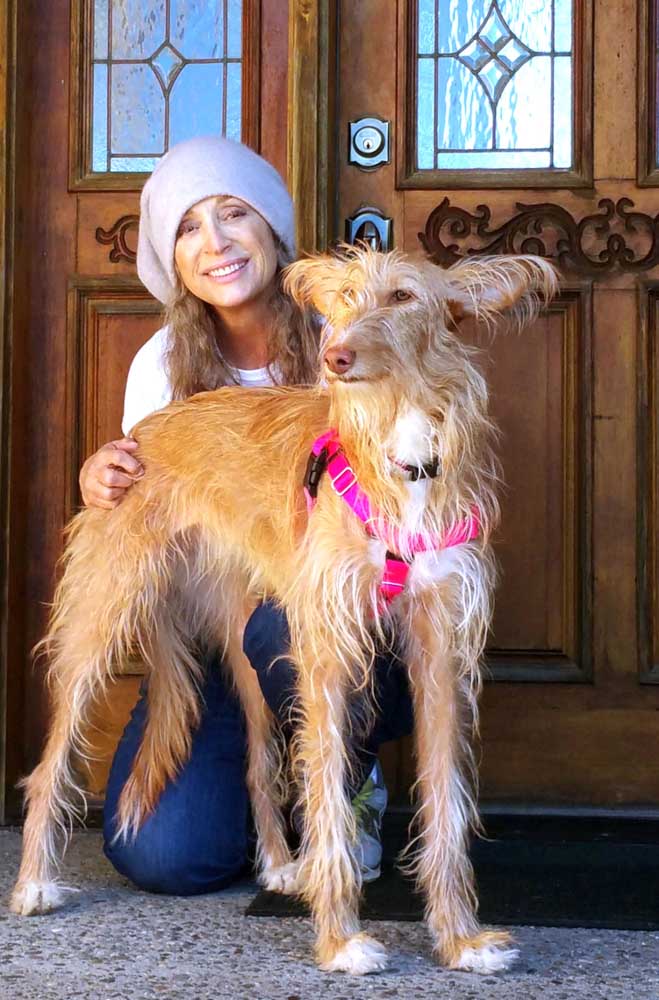Canine Corner: A new year calls for new training efforts
Published 9:35 pm Saturday, January 4, 2020

- Rain Jordan of Expert Canine with Dahlia.
A new year calls for new efforts. In an effort to be more effective in helping dogs and their humans, today I’m going to be direct: It is the failure of people to align their expectations with reality that results in some very unfortunate dogs being hurt by shock, choke, or prong collars and myriad “corrections.”
You already know from a previous article that aversives and “corrective” training methods are scientifically shown to increase behavior problems. Yet these torture devices and inhumane methods continue. For 2020, let’s make it a goal to reduce harm and increase happiness. By aligning our sometimes-unreasonable expectations with reality, we can do this.
Scenario: Your dog pulls you off your feet while walking. Perhaps he’s afraid of strangers and therefore barks and lunges to attempt to scare the discomforting stranger away. Adding more discomforting stimuli such as corrections would add to your dog’s feelings of fear, and create an association between corrections and scary strangers, thereby increasing the likelihood he’ll pull you off your feet again, accidentally, out of fear. What to do instead:
1. Change your dog’s negative associations with strangers to positive associations via counterconditioning, taught to you by an anti-aversives, certified canine behavior consultant.
2. Train your dog in loose leash walking using positive reinforcement. Train specific emergency response cues as well. You might also ask yourself whether it’s realistic to expect a dog to never bark or lunge while on leash, especially given the existence of squirrels. You might choose to avoid certain squirrel play areas.
Scenario: Your dog claws, bites, and chews at her crate (or your door) whether you’re away at work or home. Perhaps she wasn’t humanely crate trained at a pace pleasant for her, or at all — perhaps she was simply shut in there and expected to accept the situation without concern. Being locked in the crate against her will results in negative associations being formed with the crate.
Or maybe she has separation anxiety, or confinement anxiety; if so, crating her will worsen that anxiety, and your dog might someday injure herself trying to escape. “Correcting” the dog for these behaviors would add to her distress and increase her anxiety, and would create an association between the crate and the unpleasant correction, making her discomfort with crates worse. What to do instead:
1. Use shaping to positively reinforce her entering her crate on her own volition, slowly working up to remaining there, happily, as a result of the crate being associated with only positive things. Increase the duration slowly, at the dog’s own pace, continuing the positive reinforcement method.
2. Get help from a certified canine behavior consultant or CSAT to slowly heal separation anxiety. For confinement anxiety, a larger ex-penned-off but open area of the home, or the strategic, careful use of a baby gate around safe open spaces in the home, might be better. Whatever the cause, expecting a dog who is distressed by being left alone or crated to not try to escape just isn’t reasonable. Anyone who has claustrophobia knows being locked in a closet would result in panic and probably frantic attempts to escape.
Dogs often show their objections to situations by “fidget”— one of the four Fs of Fight, Flight, Freeze, or Fidget. Fidgets might include sniffing around, scratching oneself, lip licking, yawning, shaking off, along with other classic distress signals. If we don’t recognize their fidgets as objections and insist on pressing forth with our own objectives, they may freeze in place.
If we still do not recognize, or if we ignore, this signal and continue on our mission — e.g., to corner a dog in order to leash or examine — the typical dog who has no means of escape will naturally feel threatened by us, and therefore may feel there is no choice but to “fight” in order to self-defend. In this way, many dog bites are caused by ourselves and our ill-conceived expectations. When our dogs are placed in uncomfortable situations they aren’t able to resolve by objecting or leaving, they may feel their survival is at risk.
If you feel your life is being threatened, you respond accordingly. Dogs are no different. Give yourself and your dogs the happiest possible new year by aligning your expectations with their reality. Your dogs will feel safer and therefore be safer, and so will you. To learn more about helping your dog feel safe, visit The Fearful Dogs Project; www.FearfulDogsProject.org.
Rain Jordan is a certified canine behavior consultant and certified professional dog trainer. Visit her at www.ExpertCanine.com



